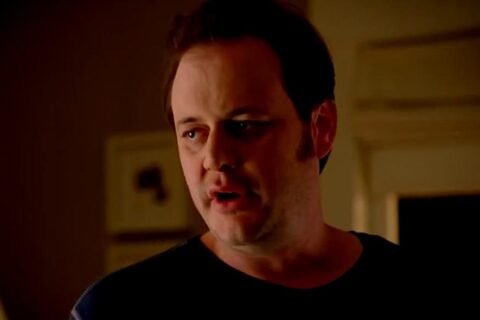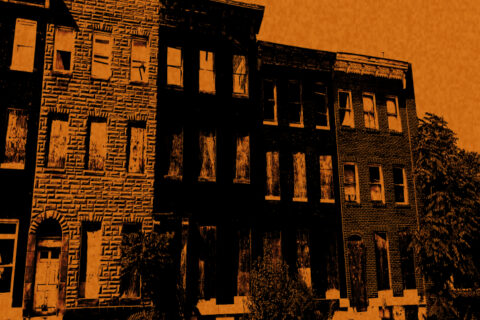My good friend Nero the Pict and I had three hours to find Confederate Hill in Loudon Park, between Wilkens and Frederick Avenues, in West Baltimore, before meeting Erique for training.
At the front gate of the park are buried about a regiment’s worth of Maryland Union soldiery, right on the main drag where the descendants of those they fought to free sell dope and murder at cut-rate prices.
Further back in the cemetery, beneath centuries old oaks, which the grounds keepers allow to fall prey to parasitic vines, are buried a battalion-strength of Maryland Confederates, 650 in number.

Five large monuments grace the hill overlooking an abandoned, bronze-doored mausoleum, buried in the opposite hillside, a gracefully haunted hilltop, tastefully away from the Yankee road and so much more appropriate to the Lost Cause these men fought for.

A relation of John Wilkes Booth’s lies there in the sun.
A number of unknown soldiers rest there, somewhat accounted for among the ranks of others, from Alabama, Georgia, Maryland, mostly men who died of starvation and illness imprisoned at Point Lookout between October 1864 and February 1865.

Among them was a member of a Maryland Artillery unit who won the Confederacy’s highest honor, and survived the war into honored old age.
A man who commanded cavalry in a Maryland raid has a monument dedicated to his gallantry in the soft shade of the massive oak.
Next to him, beneath the monument to an unnamed CSA general reminiscent of Robert E. Lee, the wife of this grey rider has her own better preserved and touchingly inscribed monument, proclaiming her a woman of grace.
Among them is a monument to a youth who was slaughtered by federal troops in the paleface Baltimore Riot.
Most striking to me was that this hill for the remembrance of those we hate because they were better than we are has retained the solitude of a time earlier than theirs, under the shade of a tree that three men could barely circle with hands joined, a tree such as their slave ancestors felled by the millions to make this land ripe for the twin tyrannies that would deprive them of prosperity, march them off to war, kill them and then replace them.
The irony is that they fought to preserve their own poverty at the hands of a slave race and their masters and those who defeated them ultimately fought to ensure that their descendants would be driven from their hometown by the savage scions of those they freed.
Seeing the many battle flags and remembrance cards left by an organization dedicated to preserving their memory, and measuring the grace of their shaded place next to the ranked white rows of union boys whose headstones face one of the most blighted boulevards of their ravaged hometown, one wonders if it’s better to fight for the cause bought and lost or the one won and sold?
Perhaps it is only of importance that these men remind us that there was once a time when men were credited for loyalty and courage, rather than having the luck of being owned by the winning machine.
1865 marked the end of the gross, government-mandated ownership of humans and the advent of its refined evolution, a world where one is reduced to a debt cipher and must either be lied to that his people were either the only slaves, or never slaves, so that the debtor might not be haunted by the fact that he lives under the same exact threats as his shackled and branded ancestor, most likely a doomed youth who was put to murdering the world’s largest living things, so that his grandchildren might be replaced by a people better designed to thrive in a barren world bereft of their shade.
At least the bones of these 650 men and a few of their women lie beneath a shaded patch of our stone memories, lingering still and stoic in a world dedicated to the collective pursuit of social amnesia.


James is a full-time writer, part-time coach and part-time wage slave with an extensive history of brain trauma. Check out: http://www.jameslafond.com/




The mention of the men who died of starvation and illness while imprisoned at Point Lookout brings to mind this scanned image. It is my great grandfather’s POW release from Point Lookout. It is a treasured family heirloom that I have the honor of caring for until it is passed along to the next generation. A copy of this is on display at the museum at Point Lookout.
http://mcgeheefamily.org/wp-content/uploads/powside1.jpg
That is, indeed, a treasure…
here at Springfield mo, the Civil War cemetery still is maintained and cared for, both the Confederate and Union graveyards, which were combined into one very soon after the war. They amazingly enough are not in some obscure area, but are on the main drag running thru town. Oddly enough the small Jewish cemetary is right next to it. They are very well maintained.
What happened to the LIKE feature button, on this blog?
James LaFond is a national treasure. I am so pleased to see him writing here.
A much more concerted effort needs to be made to tend – and to document – our heroes’ gravesites, since a time is coming, and some places now is, when those granite and limestone slabs are the only monuments that will exist to their gallantry and manhood that so much exceeds our own capacities.
Be careful when you publicize the existence of such a thing. Doubtless some (((real estate developer))) is already grinning and rubbing his grubby little paws together at the thought of paving over the cemetery to build an “adult theater,” or perhaps a monument to transgender persons killed in the Holocaust.
For all that we think of them as money-grubbing, it isn’t money that motivates certain of our foes. It’s a tool to them, a means to an end, which allows them to exercise their spite. Never forget that.